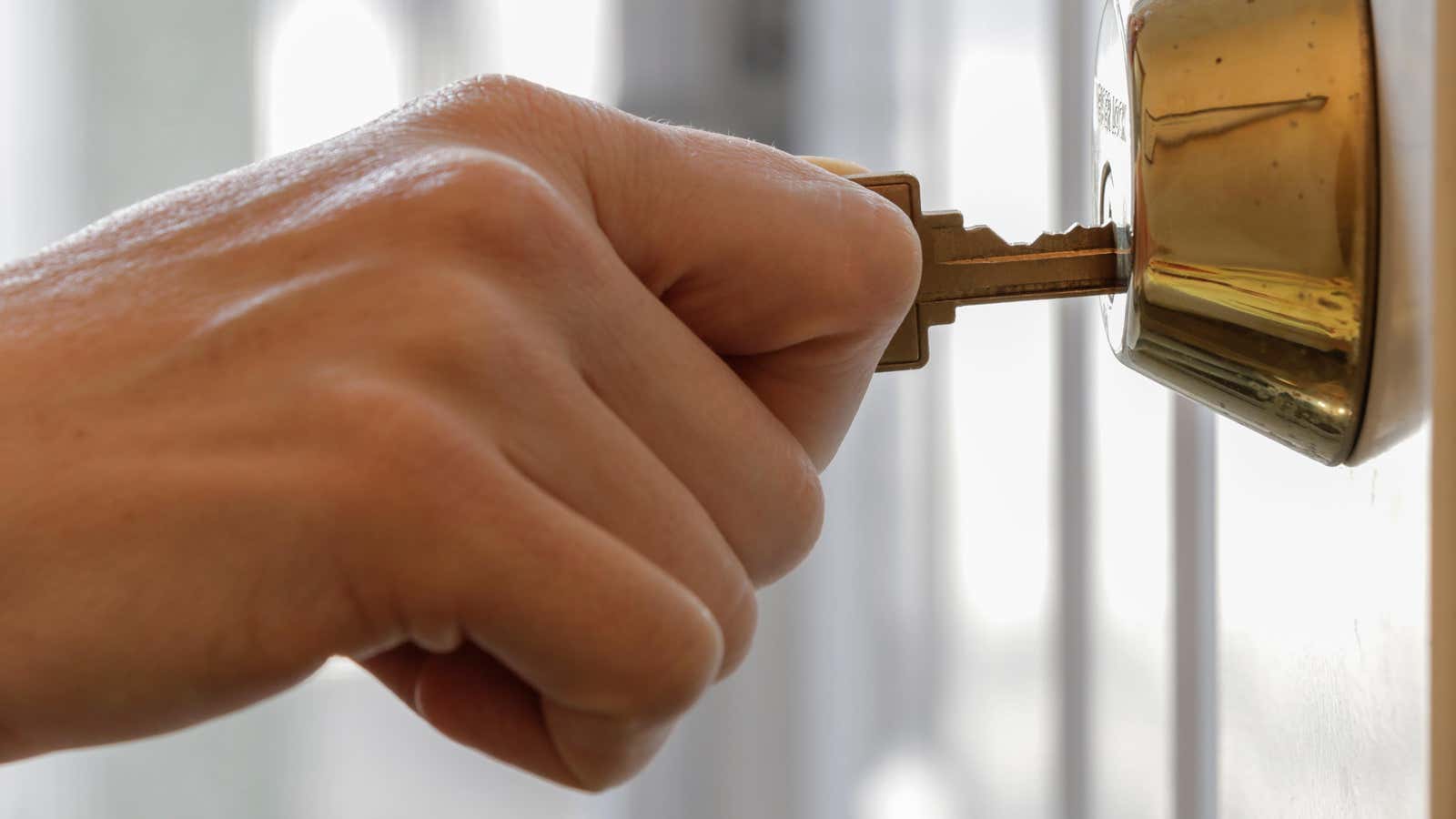How to Fix a Stuck Lock Without Calling a Locksmith

Getting your door locks to work properly isn’t just a matter of convenience, it’s also a matter of security: getting rid of the hassle of door locks will make you more likely to develop good locking habits. But sometimes your locks can stop working and you have to put your grocery bag out to fiddle with the mechanism for a few minutes before your key actually works. If this sounds familiar, here are a few ways to deal with sticky locks and latches so your keys turn easily—without calling in an expensive professional locksmith.
Prevention of unnecessary wear
To prevent problems with locks, don’t slam doors, put weight on knobs and knobs, or put extra weight on the door itself. Pulling the hinges out of the case or snapping the hardware causes the lock parts to wear faster and sometimes these problems are difficult to fix.
Clean the door lock
To eliminate a sticky lock, the first step is to clean the entire mechanism. Use compressed air or a compressed air compressor tool to blow any debris out of the keyhole. Sometimes dust or dirt particles can get into the lock mechanism, causing the key to not fit correctly, and this will also help solve this problem. The next thing to clean is the latch and deadbolt. Turn all knobs and locks while the door is open and wipe down any protruding parts on the edge of the door. You can do the same with the strike plate – the metal plate that receives the latch and deadbolt from the side of the door frame – as if something sticky gets in there, it can also jam.
Use lubricant
After everything is cleaned, the next step is to lubricate the lock. The two most common types of lock lubricants are teflon and graphite , which are dry lubricants. Products like WD-40 and other greases can trap particles and stick to the inside of the lock, actually making the problem worse, which is why most professionals don’t recommend using them. Lubricate the lock by putting some grease into the lock groove and inserting the key, turning the lock a few times. This procedure should be carried out approximately once a year. If you find that you are constantly having problems with the lock, it is likely that another problem is causing them.
Align the striker plate
If your door lock and strike plate are not properly aligned, this can cause the lock to jam because the weight of the door may be partly on the edge of the strike plate and not on the hinges. Check the hinges to make sure they are not loose and make sure the seal is not pushing the door out of alignment with the frame. If you need to move the door up or down to get it to latch properly, or if turning the handle is difficult to open or close the door, you most likely have an alignment problem. If the striker plate is a little too high or too low, you can fix it yourself by unscrewing it, drilling new holes, and screwing it back in place (you may also need to enlarge the hole in the doorframe to allow the latch to go somewhere). Some strikers have built-in slots that allow them to be moved up or down slightly without unscrewing completely. If so, you can simply loosen the screws, move the striker plate to the correct position, and tighten everything back.
Use only original keys to create duplicates
If you’ve taken all of these steps and the locks are still stuck, your keys may be to blame, especially if your copy was made from a copy of a copy. If you still have the original keys, it’s best to use them to make copies. The further away from the original you go, the more deformed the shape can become. If your problems are persistent and don’t have any other obvious cause, this could be the source of your troubles.
If all else fails, call the wizard
Unfortunately, if you don’t have the original keys for your lock, the way to fix the problem is most likely to replace your locks or replace them. To do this, you will most likely need the services of a professional. You can also see a professional if you have recurring problems that can’t be fixed with normal maintenance and wear and tear. There may be another problem with your door or door frame that requires an experienced person to diagnose. While an enterprising master dyer can potentially solve these problems, it will most likely take more than a screwdriver and a bit of patience.